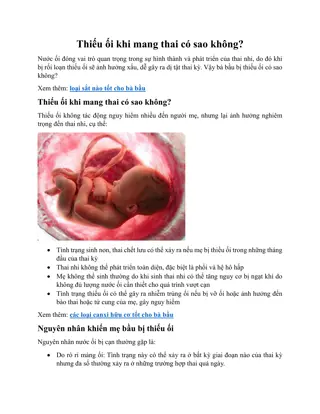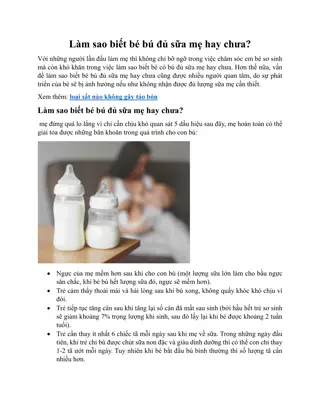
Global Deflation and its Impact on Labour Markets
Explore the complex relationship between global deflation and the labor market, as illustrated through data visualizations and analysis from various countries like the USA, Japan, France, and the United Kingdom. Learn about factors such as interest rates, unit labor cost growth, and their influence on inflation rates.
Download Presentation

Please find below an Image/Link to download the presentation.
The content on the website is provided AS IS for your information and personal use only. It may not be sold, licensed, or shared on other websites without obtaining consent from the author. If you encounter any issues during the download, it is possible that the publisher has removed the file from their server.
You are allowed to download the files provided on this website for personal or commercial use, subject to the condition that they are used lawfully. All files are the property of their respective owners.
The content on the website is provided AS IS for your information and personal use only. It may not be sold, licensed, or shared on other websites without obtaining consent from the author.
E N D
Presentation Transcript
Sao Paolo, August 2017 Prof. Dr. Heiner Flassbeck www.makroskop.eu
Why global Deflation? The paradox of the labour market 62 9 61 8 60 7 59 Percent of GDP 6 Percent 58 5 57 4 56 3 55 54 2 1970 1971 1972 1973 1974 1975 1976 1977 1978 1979 1980 1981 1982 1983 1984 1985 1986 1987 1988 1989 1990 1991 1992 1993 1994 1995 1996 1997 1998 1999 2000 2001 2002 2003 2004 2005 2006 2007 2008 2009 2010 Employee compensation Unemployment rate (right scale)
Interest disappeared Short term rates) 20 USA 16 Zinss tze p.a. in % EWU2 12 8 4 Japan 0 1993 1995 1997 1960 1961 1962 1963 1964 1965 1966 1967 1968 1969 1970 1971 1972 1973 1974 1975 1976 1977 1978 1979 1980 1981 1982 1983 1984 1985 1986 Monate 1987 1988 1989 1990 1991 1992 1994 1996 1998 1999 2000 2001 2002 2003 2004 2005 2006 2007 2008 2009 2010 2011 2012 2013 2014 1)In der Regel 3-Monats-Interbankenrate; Daten f r Japan von 1970 bis 2001 Jahreswerte. 2)Dicke rote Linie EWU18 mit Monatswerten ab 1994 (OECD); d nne rote Linie ab 1960: Belgien, Deutschland, Frankreich, Italien, Niederlande; ab 1966: einschl. Portugal; ab 1967: einschl. sterreich; ab 1970: einschl. Finnland; ab 1971 einschl. Irland; ab 1977 einschl. Spanien; ab 1980 einschl. Griechenland; teilweise Jahresdaten; Gewichtung mit BIP auf ECU-Basis. Quellen: OECD, Ameco Datenbank, Stand: Mai 2014. flassbeck-economics.de
In real terms the rates are even negative Kurzfristige reale Zinsen1) 10 Frankreich 8 Vereinigtes K nigreich 6 4 in % 2 Deutschland 2) 0 -2 -4 1984 1989 1994 1999 2004 2009 2014 1980 1981 1982 1983 1985 1986 1987 1988 1990 1991 1992 1993 1995 1996 1997 1998 2000 2001 2002 2003 2005 2006 2007 2008 2010 2011 2012 2013 2015 1)Mit BIP Deflator deflationiert; 2)bis 1991 Westdeutschland Quelle: AMECO flassbeck-economics.de
Deflation in Japan ... Unit labour cost growth determines inflationrates 30 25 ULC1) Ver nderungsrate geg. Vorjahr in vH 20 15 10 5 Inflation2) 0 -5 1971 1973 1975 1977 1979 1981 1983 1985 1987 1989 1991 1993 1995 1997 1999 2001 2003 2005 2007 2009 2011 2013 Jahre 1)J hrliche Ver nderungsrate der Lohnst ckkosten (Bruttoeinkommen aus unselbst ndiger Arbeit je Besch ftigten dividiert durch reales Bruttoinlandsprodukt je Erwerbst tigen) in vH. 2)J hrliche Ver nderungsrate des Deflators des Bruttoinlandsprodukts in vH. Quellen: Ameco Datenbank (Stand: November 2013), OECD. flassbeck-economics.de 6
And Europe Growth of ULC and Inflation in EMU (1961 to 2012)2) 16% 14% 12% 10% 8% 6% 4% 2% 0% -2% 1961 1963 1965 1967 1969 1971 1973 1975 1977 1979 1981 1983 1985 1987 1989 1991 1993 1995 1997 1999 2001 2003 2005 2007 2009 2011 ULC growth Inflation Anmerkungen: 1) Bruttoeinkommen in ECU bzw. Euro aus unselbst ndiger Arbeit je Besch ftigten dividiert durch reales BIP je Erwerbst tigen. 2) 12 L nder: Belgien, Deutschland, Finland, Frankreich, Griechenland, Irland, Italien, Luxemburg, Niederlande, sterreich, Portugal, Spanien Quelle: AMECO Datenbank (Stand Nov-12); eigene Berechnungen flassbeck-economics.de 7
... and the United States Wages are under pressure for a long time 12 10 ULC1) Ver nderungsrate geg. Vorjahr in vH 8 6 Inflation2) 4 2 0 -2 1971 1973 1975 1977 1979 1981 1983 1985 1987 1989 1991 1993 1995 1997 1999 2001 2003 2005 2007 2009 2011 2013 Jahre 1)J hrliche Ver nderungsrate der Lohnst ckkosten (Bruttoeinkommen aus unselbst ndiger Arbeit je geleistete Arbeitsstunde der Besch ftigten dividiert durch reales Bruttoinlandsprodukt je geleistete Arbeitsstunde der Erwerbst tigen) in vH.2)J hrliche Ver nderungsrate des Deflators des Bruttoinlandsprodukts in vH. Quellen: Ameco Datenbank (Stand: November 2013), OECD. flassbeck-economics.de 8
Inflation and ULC growth 1970-2013 in several countries 8 R = 0.9955 Italy 7 UK Spain average yearly change of ULC in % 6 5 France EMU (12 countries) 4 USA Westdeutschland (1970-1991) 3 Belgium (1980-2013) 2 Austria (1980-2013) Japan Netherlands (1980-2013) 1 Germany (1991-2013) 0 0 1 2 3 4 5 6 7 8 average yearly change of the GDP deflator in % Sources: Ameco, OECD. flassbeck-economics.de 9
and the implications for Europe Unit labor costs 1) 160 150 Italy Spain 140 Index 1999 = 100 130 Greece Portugal 120 Germany 110 France 100 90 1999 2000 2001 2002 2003 2004 2005 2006 2007 2008 2009 2010 2011 2012 2013 2014 2015 1)ratio of income from employment in national currency per employee to real GDP per employee; 1999 = 100 Source: AMECO Geneva and Zurich, February 2015 flassbeck-economics.de
Because Germany violates the rules of EMU and forces deflationary adjustment Unit Labour Cost1) 150 Inflation target ECB: 1.9% 140 Italien Index 1999 = 100 130 Frankreich 120 Deutschland 110 100 90 1999 2000 2001 2002 2003 2004 2005 2006 2007 2008 2009 2010 2011 2012 2013 2014 2015 2016 1)Bruttoeinkommen aus unselbst ndiger Arbeit in nationaler W hrung je Besch ftigten im Verh ltnis zu realem Bruttoinlandsprodukt je Erwerbst tigen; 1999 = 100; 2016: Sch tzwert der Kommission Quelle: AMECO flassbeck-economics.de
German undervalution against the rest of the world Real Effective Exchange Rates1) 160 UK 140 120 Index 1995 = 100 USA 100 France 80 Germany 60 40 20 1995 2010 1996 1997 1998 1999 2000 2001 2002 2003 2004 2005 2006 2007 2008 2009 2011 2012 2013 2014 2015 2016 1)Basierend auf den Lohnst ckkosten, Index 1995 = 100; Wert 2016: Sch tzung der europ ischen Kommission Quelle: AMECO flassbeck-economics.de
Trade is free and the winner is: Germany Current account1) 10 Germany 2) 8 6 4 In % des BIP 2 0 -2 -4 US UK -6 -8 1981 1987 1993 1999 2005 2011 1980 1982 1983 1984 1985 1986 1988 1989 1990 1991 1992 1994 1995 1996 1997 1998 2000 2001 2002 2003 2004 2006 2007 2008 2009 2010 2012 2013 2014 2015 1)in % des BIP; 2)bis 1991 Westdeutschland Quelle: AMECO flassbeck-economics.de
In Europe and compared to the US German current account1) 10 70 60 8 World 50 6 In Prozent des BIP In Milliarden EUR/DM 40 4 US 30 2 20 0 10 -2 0 -4 -10 1991 2009 1992 1993 1994 1995 1996 1997 1998 1999 2000 2001 2002 2003 2004 2005 2006 2007 2008 2010 2011 2012 2013 2014 2015 2016 1)F r Gesamt: In % des BIP, linke Achse; F r Saldo mit USA: In Milliarden EUR/DM, rechte Achse Quelle: AMECO, Deutsche Bundesbank flassbeck-economics.de
Saving and investment in Japan: Why did the interest rate disappear? Japan1) 10 8 companies 6 4 in Prozent des BIP 2 Private households 0 -2 Foreign countries2) -4 -6 government -8 -10 1999 2000 2001 2002 2003 2004 2005 2006 2007 2008 2009 2010 2011 2012 2013 2014 2015 2016 1)In % des nominalen BIP; 2)Negative Werte bedeuten eine Verschuldung des Auslands Quelle: AMECO flassbeck-economics.de
Because companies are net savers now Fiscal balances1) Japan 1981-2015 15 private Haushalte Unternehmen 10 in Prozent des BIP 5 0 Ausland2) -5 Staat -10 -15 2005 1981 1983 1985 1987 1989 1991 1993 1995 1997 1999 2001 2003 2007 2009 2011 2013 2015 1)In % des nominalen BIP; 2)Negative Werte bedeuten eine Verschuldung des Auslands Quelle: AMECO
In the US: only one debtor remains US1) 8 Foreign countries2) Private households 6 4 2 in Prozent des BIP 0 companies -2 -4 -6 government -8 -10 -12 -14 2002 2015 1999 2000 2001 2003 2004 2005 2006 2007 2008 2009 2010 2011 2012 2013 2014 2016 1)In % des nominalen BIP; 2)Negative Werte bedeuten eine Verschuldung des Auslands Quelle: AMECO flassbeck-economics.de
In the UK private households are indebted again UK1) 8 Foreign countries2) 6 4 2 in Prozent des BIP 0 Private households -2 -4 government -6 companies -8 -10 -12 2002 2015 1999 2000 2001 2003 2004 2005 2006 2007 2008 2009 2010 2011 2012 2013 2014 2016 1)In % des nominalen BIP; 2)Negative Werte bedeuten eine Verschuldung des Auslands Quelle: AMECO flassbeck-economics.de
In France companies still are in debt but no growth with foreign savings France1) 6 Private households 4 2 in Prozent des BIP Foreign countries2) 0 -2 companies -4 government -6 -8 2016 1995 1996 1997 1998 1999 2000 2001 2002 2003 2004 2005 2006 2007 2008 2009 2010 2011 2012 2013 2014 2015 1)In % des nominalen BIP, 2016: Sch tzwert der Kommission; 2)Negative Werte bedeuten eine Verschuldung des Auslands Quelle: AMECO flassbeck-economics.de
Spain has a CA surplus but companies save Net lending / borrowing1) of economic sectors in Spain 15 10 Corporations Foreign countries2) in percentage of the GDP 5 0 Private households -5 -10 Government -15 1999 2000 2001 2002 2003 2004 2005 2006 2007 2008 2009 2010 2011 2012 2013 2014 2015 1)In % of the nominal GDP 2)Negative values represent foreign debts Source: AMECO flassbeck-economics.de
likewise Italy, but it has to be in recession Italy1) 4 3 2 Private households 1 in Prozent des BIP 0 companies -1 Foreign countries2) -2 -3 -4 government -5 -6 1999 2000 2001 2002 2003 2004 2005 2006 2007 2008 2009 2010 2011 2012 2013 2014 2015 2016 1)In % des nominalen BIP; 2)Negative Werte bedeuten eine Verschuldung des Auslands Quelle: AMECO flassbeck-economics.de
Only Germany has found the solution: Mercantilism or Merkelantism Germany1) 8 Private households 6 4 companies 2 in Prozent des BIP 0 -2 government -4 -6 Foreign countries2) -8 -10 -12 1995 1996 1997 1998 1999 2000 2001 2002 2003 2004 2005 2006 2007 2008 2009 2010 2011 2012 2013 2014 2015 2016 1)In % des nominalen BIP, 2016: Sch tzwert der Kommission; 2)Negative Werte bedeuten eine Verschuldung des Auslands Quelle: AMECO flassbeck-economics.de
But But o once normal normal economy economy nce upon a time Germany was a upon a time Germany was a West Germany 1960 - 1975 10 8 6 Private households 4 In percentage of GDP 2 Government 0 -2 Foreign countries2) -4 Corporations -6 -8 -10 1960 1961 1962 1963 1964 1965 1966 1967 1968 1969 1970 1971 1972 1973 1974 1975 1)In % of the nominal GDP 2)Negative values represent foreign debts Source: AMECO Geneva and Zurich, February 2015 flassbeck-economics.de
Critical Analyses on Politics and Economics Visit us at www.makroskop.eu Publisher: Prof. Dr. Heiner Flassbeck & Dr. Paul Steinhardt
Europe still in the doldrums Industrial production1) 120 Germany 110 Index 2010 = 100 EMU 19 100 France 90 Italy 80 2009 2010 2011 2012 2013 2014 2015 2016 2017 1)Volume index (2010 = 100) for mining, extraction of ore, processing trade / manifucaturing of goods, power supply; per working day & saisonally adjusted Source: Eurostat. flassbeck-economics.de
Southern Europe: Some positive signals but no recovery yet Industrial production1)in Spain, Portugal und Greece 120 110 Index 2010 = 100 Spain 100 Portugal 90 Greece 80 2009 2010 2011 2012 2013 2014 2015 2016 2017 1)Volume index (2010 = 100) for mining, extraction of ore, processing trade / manifucaturing of goods, power supply; per working day & saisonally adjusted Source: Eurostat. flassbeck-economics.de
Construction is not reviving Construction1) 160 140 120 Index 2010 = 100 100 Italy Spain 80 60 Portugal 40 2009 2010 2011 2012 2013 2014 2015 2016 2017 1)Volume index (2010 = 100) for construction; per working day & saisonally adjusted Source: Eurostat. flassbeck-economics.de
Inflation and ULC growth 1970-2013 in several countries 8 R = 0.9955 Italy 7 UK Spain average yearly change of ULC in % 6 5 France EMU (12 countries) 4 USA West Germany (1970-1991) 3 Belgium (1980-2013) 2 Austria (1980-2013) Japan Netherlands (1980-2013) 1 Germany (1991-2013) 0 0 1 2 3 4 5 6 7 8 average yearly change of the GDP deflator in % Sources: Ameco, OECD. Geneva and Zurich, February 2015 flassbeck-economics.de
Wages and Productivity in France Nominal wage and productivity, France (1999=100) 150 140 130 120 110 100 3 1999 2000 2001 2002 2003 2004 2005 2006 2007 2008 2009 2010 2011 2012 Nominal wages per hour Productivity 1) values of employee working hours in 2012 are estimated based on data from AMECO. Source: AMECO (Nov-12); OECD (Apr-13); own calculations flassbeck-economics.de
Wages and Productivity in Germany Nominal wages and productivity, Germany (1999=100) 150 140 130 120 110 100 3 1999 2000 2001 2002 2003 2004 2005 2006 2007 2008 2009 2010 2011 2012 Nominal wages per hour Productivity 1) 2) 3) Nominal income auf employed workers divided by the sum of their working hours multiplied by the number of employed workers Real GDP divided by working hours of all employed workers multiplied by the number of all employed worker. values of employee working hours in 2012 are estimated based on data from destatis. Source: AMECO (Nov-12); OECD (Apr-13); own calculations flassbeck-economics.de






















